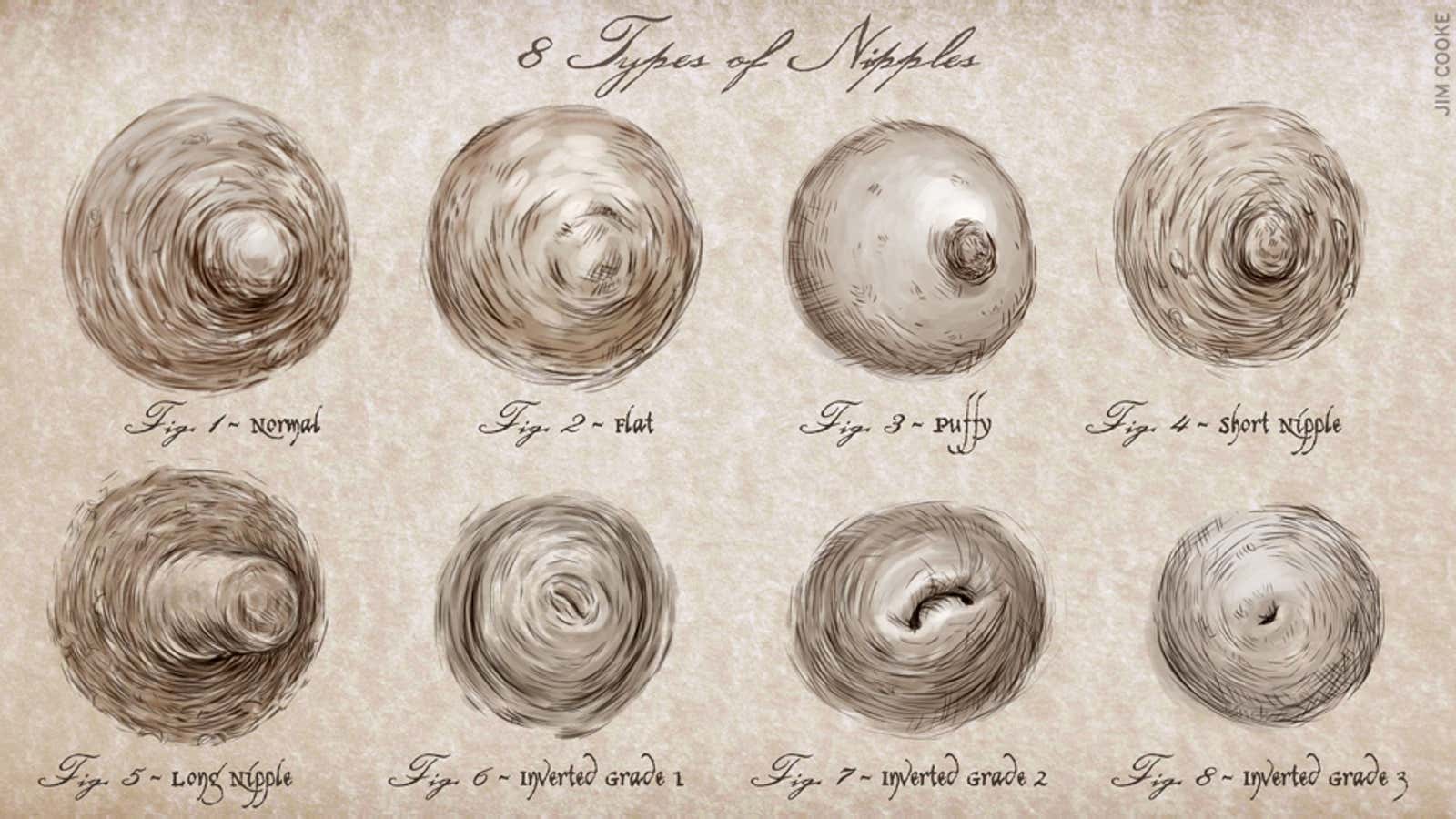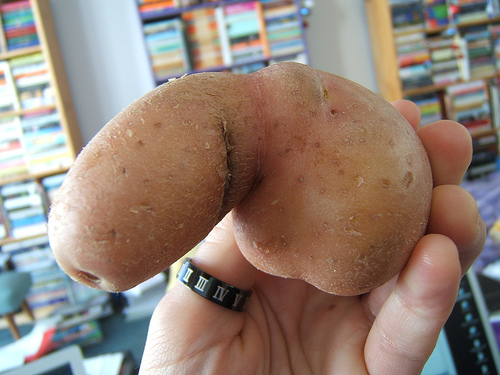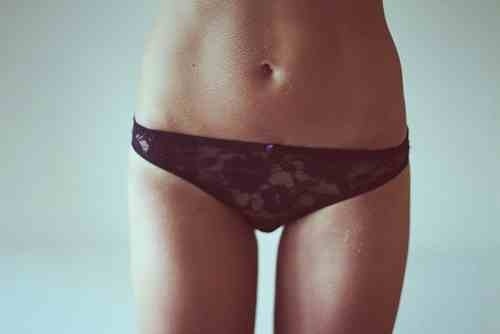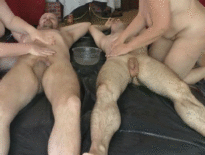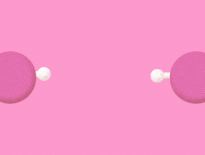I need Answers! Are my nipples normal?
No two nipples are the same just like cocks and fingerprints. Let’s just say that if variety is the spice of life, then nipples make livin’ real tasty. But did you know that there are actually listed clinical categories of nipples? The size and colour of the areola, the amount of glands and the shape and appearance of the teat itself all contribute to the aesthetic, while other terms describe the lack of elasticity of the muscle tissue that makes up the nipple. Find out which one of your tits fit.
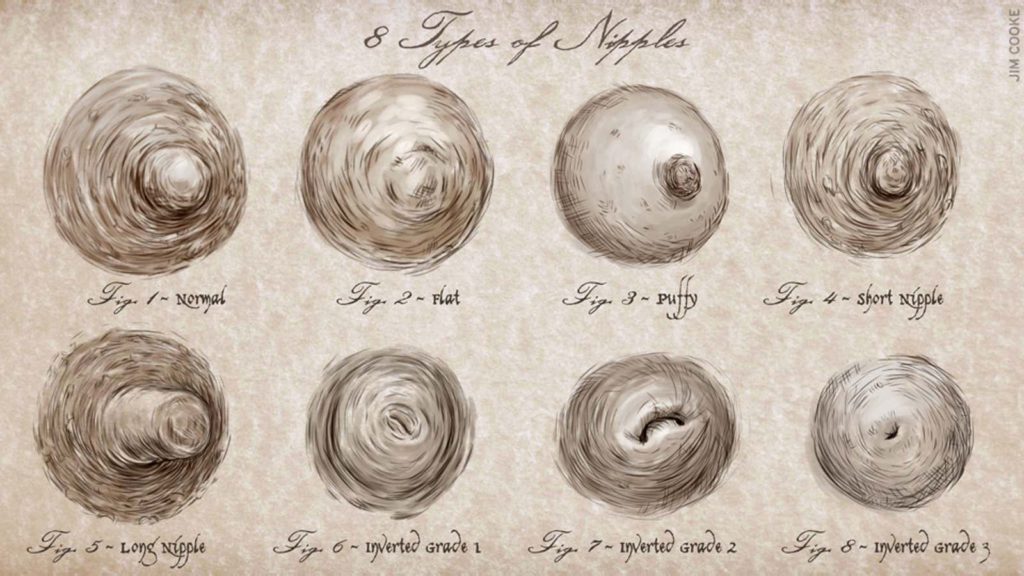
Contrary to a belief perpetuated by many R-rated ’80s movies, girls don’t hang out together topless. No one wears lingerie at slumber parties and we aren’t inclined to hold conversations with one another when we’re naked. Perhaps because of this, we actually don’t have much of a reference point when it comes to what “normal” is with regards to nipples. Sure, we see boobs in magazines, films, and late-night cable channels but because of mainstream beauty standards, there isn’t much diversity when it comes to nipple types. We’re kind of left in the dark to assume that if our tits don’t look like those in the media they’re ugly or weird.
So let’s break them all down and reinforce your breasts are normal and yours!!
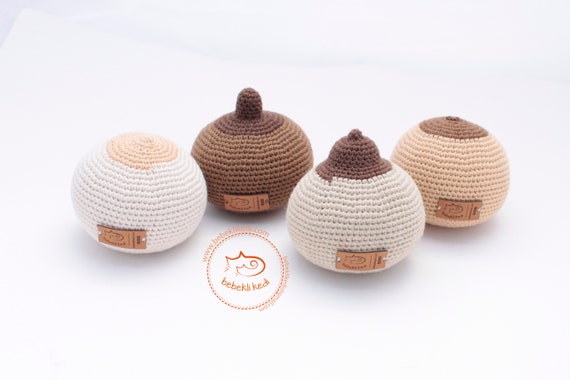
Normal (Just a clinical term)
These nipples protrude a few millimetres from the areola at their regular state but protrude further upon arousal, temperature changes, or tactile stimulation.
Flat
Flat nipples are not everted at their normal state. They are just like they sound: Flat; blending into the areola. Flat nipples will protrude, albeit less so than “normal” nipples, upon stimulation, temperature changes and arousal. Flat nipples have the ability to turn into “normal” nipples when breastfeeding draws them out.
Puffy
Puffy nipples have most of the same characteristics as “flat” nipples, the only difference being that in “puffy” nipples, the areola is raised up off the breast.
Inverted
Inverted nipples occur when the lactiferous ducts do not get properly stretched during puberty. Inverted nipples have a dimpled appearance, folding into the areola. Much like with flat nipples, inverted nipples can be drawn out from the body either through cosmetic surgery, breastfeeding, nipple shields, or sex toys like nipple clamps, all of which loosen up the tissue. There are three subcategories, or “grades,” of inverted nipples.
- Grade 1
These nipples can occasionally become everted from arousal, temperature changes, and stimulation. They can also protrude through manipulation by lightly squeezing fingers around the areola, a few centimeters behind the nipple. Grade 1 nipples will maintain protrusion without retracting. Breastfeeding is possible with Grade 1 nipples. - Grade 2
These nipples can be pulled out—though not as easily—through the same manipulation method as Grade 1 nipples. However, Grade 2 nipples retract back into the areola after finger pressure is released. Breastfeeding is possible with Grade 2 nipples, but will present problems. - Grade 3
These nipples are severely retracted into the areola, meaning they cannot be pulled out through physical manipulation, and typically require surgery in order to protrude. The milk ducts tend to be constricted, rendering breastfeeding impossible.
Unilateral
This is when one nipple is inverted while the other is not. Kind of like boobs are winking at you.
Despite the fact that “normal” is one of these categories, one study indicates that “28 to 35 percent of women…have nipples that don’t protrude that well,” meaning that “abnormal” nipples are actually pretty common. And about 10% of all nips are considered “inverted.” That’s like the same statistic of the population of homosexual people. So, when you think about it that way, statistically, you probably have a cousin with inverted nipples (if you don’t have them yourself). But no matter if your tits are long or short or dark or pale or in or out or even sporting a few stray hairs (hey, it happens!), nobody who’s lucky enough to see them is ever going to complain.
